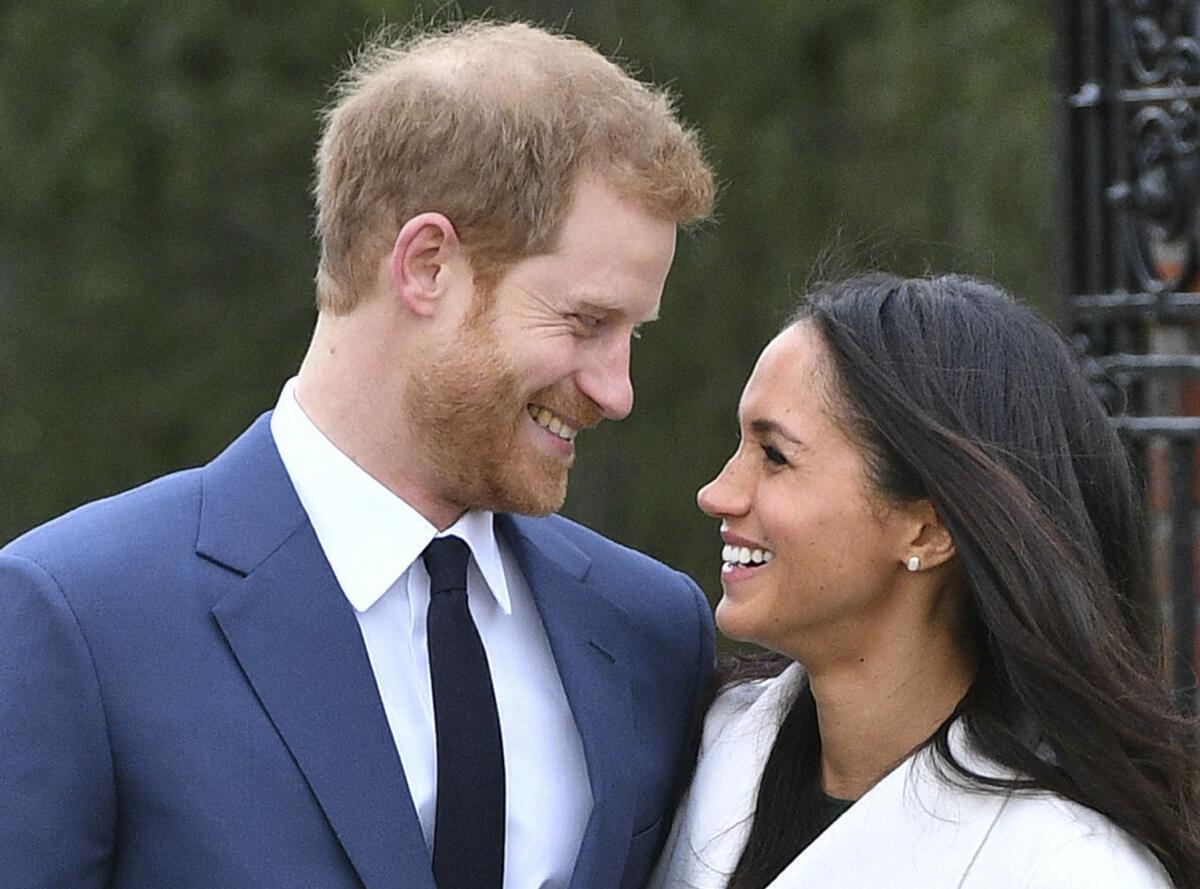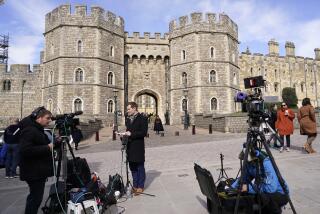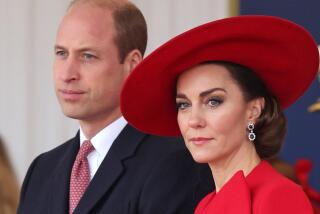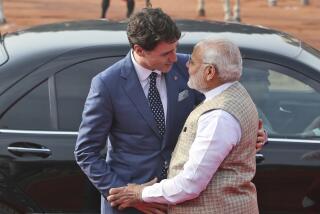Harry and Meghan could call Canada home. Do they even like hockey?

The possible migration of a man long known as prince and his formerly thespian wife to this land even colder than Minnesota is stirring great interest, passion and questions.
Harry and Meghan, whose formal titles are the duke and duchess of Sussex, haven’t yet pinpointed where they and offspring Archie might surface after the couple announced last week they were planning to step back as senior members of the British royal family. But they did recently spend six weeks on Vancouver Island and said in their announcement that they planned “to balance our time between the United Kingdom and North America, continuing to honor our duty to The Queen, the Commonwealth, and our patronages.”
For Canadians — otherwise mired in debate about the character of their nation, a rapidly changing demographic profile and new challenges to unity growing out of a federal election that bared raw regional resentments — this possible migration from Windsor Castle to windswept Canada has left many abuzz as they wait out the winter.
Some say they would extend a welcome mat, a good thing with all the snow and slush on people’s boots this time of year. Others express cynicism or, in the case of anti-monarchists, contempt. And some simply don’t care.
In any case, the prospect that the couple could conceivably settle here, at least for part of the year, has given new life to persistent questions about the role of the monarchy and, more broadly, membership in the British Commonwealth, in a Canada that is growing more diverse and less tied to Britain.
Indeed, the spotlight cast on Canada with the tragic downing of a jetliner shortly after takeoff in Tehran last week — most of the 176 victims were on their way to Canada, and a sizable number had dual Iranian and Canadian citizenship — underscores the great changes in the North American nation as it has welcomed immigrants from places far beyond Britain and the Commonwealth.
In the last century, Canada, following the lead of Britain, entered World War I and World War II long before the United States did. But British foreign and diplomatic policy no longer holds outsized sway here.
Nor is Canada as tied to British culture as it was even a generation ago, when the Royal Union flag was inset into the Canadian ensign and “God Save the Queen,” rather than “O Canada,” was sung at hockey games and official events.
Queen Elizabeth II still appears on Canadian money, and her portrait remains visible in some official spaces, but last year the Canadian government stopped sending portraits of her to citizens requesting them. Four years ago, the country’s Foreign Ministry removed a portrait of the queen from the entrance lobby and replaced it with two coastal landscapes.
More than anything, Britain and its monarchy are flashpoints in the enduring Canadian national debate between two groups that the novelist Hugh MacLennan in 1945 called the “two solitudes,” the French-speaking Canadians who settled Quebec and various Francophone enclaves across the country and the British who took possession of the colony after the Seven Years’ War ended in 1763.
More than 175 years later, King George VI (acting officially as the king of Canada) and Queen Elizabeth (the mother of the current monarch) undertook a royal tour by train shortly before World War II broke out, the first time a reigning monarch of Britain had set foot in this land, more than 40 times the size of the mother country. There was some thought given the next year, as Britain girded for a possible German invasion, of relocating the king, the queen and Princesses Elizabeth and Margaret to Canada, but the notion was abandoned.
Yet there is precedent to royal residence in Canada. Queen Victoria’s granddaughter Princess Patricia lived here while her father, Prince Arthur, was governor general. Patricia, who died in 1974, was a popular figure and was portrayed on Canadian $1 bills during World War I. Canada no longer has dollar bills, but when they were circulating, they included a portrait of the future Queen Elizabeth, who still appears on the $20 bill.
In a column published late last week in the Globe and Mail newspaper, the Toronto writer Anne T. Donahue, author of a book called “Nobody Cares,” referenced Sally Field’s 1985 Academy Awards outburst (“You like me!”) and saluted the royal couple as “our two new best friends, who really like us.”
Sylvia Reiter, a Montreal lawyer, seemed to concur. “I don’t care where they are, as long as they are happy,” she said.
Stephane Jasmin, who runs a bed-and-breakfast in the Quebec ski town of St.-Sauveur-des-Monts, added: “Francophones don’t usually care much about the British monarchy, but we watch ‘The Crown’ and some of us like a spectacle.”
With the prospect of royal relocation in the air, a bevy of questions has been raised:
• Are there any immigration restrictions that must be addressed if Harry and Meghan decide to remain in Canada for a lengthy period? (Harry cannot claim legal status in Canada through his grandmother, whose title here is queen of Canada. But if the couple spend less than six months in the country, they would not need a visa.)
• What security concerns would there be, and who would pay for protecting the couple and their son? (Officials of the Royal Canadian Mounted Police insisted last week that the protective service would be provided by them, but security officers affiliated with the British Home Office might demand a role. Current security costs for the couple in Britain are about $826,000 a year.)
• What about healthcare? (Under Canadian law, those who have lived in their province for three months and who spend at least 183 days a year in the country are entitled to the healthcare system that U.S. presidential aspirants and Democratic Sens. Bernie Sanders and Elizabeth Warren so admire. Specifically excluded: visitors and “transients.” But it is likely that members of the Firm, as the royal family sometimes is called, are entitled to care under the British system, and presumably these potential new residents would be reimbursed by the National Health Service in London for any care they received here.)
• What if they want to stay permanently? (Canada bases its immigration policy on skills, education, wealth and professional accomplishment. The royals, to be sure, have wealth, although they said in their statement that they planned to “work to become financially independent.” The prince, however, has no higher education credentials, and his professional accomplishments are debatable. If he were to indicate a willingness to invest in Canadian business, however, his prospects would be greater. In any case, the final decision rests with the Immigration Ministry, which is unlikely to kick up a royal fuss, though the optics might be bad in an era when privilege is under scrutiny and immigration policy is a matter of passionate debate.)
• Might Harry have an official role here? (Canada already has a governor general, who is officially the representative of the queen and fills the office on the advice of the prime minister. A Postmedia poll last week found that 61% of Canadians favored appointing Harry to the role, but it is not vacant. The current governor general is Julie Payette, who previously spent 25 days in space as an astronaut.)
• Why Canada anyway? (The former Meghan Markle, a U.S. native, did spend six years off and on in Toronto while filming episodes of “Suits.” And one of her best friends is Jessica Mulroney, daughter-in-law of former Prime Minister Brian Mulroney. Although Canada may not be a safe haven from publicity — royal visits to Canada customarily attract great attention — the country probably poses far less of a threat to the royals’ privacy than does United States, probably an important factor for the son of Princess Diana, who was tormented by paparazzi, as well as for his wife, an actress.)
Moreover, they are not the only members of the royal family who appear to have a hankering for the northland.
Look carefully at the fascinator — the formal headwear favored by British women — that the former Kate Middleton, the wife of Prince William, wore at a citizenship ceremony on July 1, 2015, in Gatineau. The red fabric ornament at the top of the hat was a maple leaf, Canada’s most recognizable symbol.
More to Read
Start your day right
Sign up for Essential California for news, features and recommendations from the L.A. Times and beyond in your inbox six days a week.
You may occasionally receive promotional content from the Los Angeles Times.






